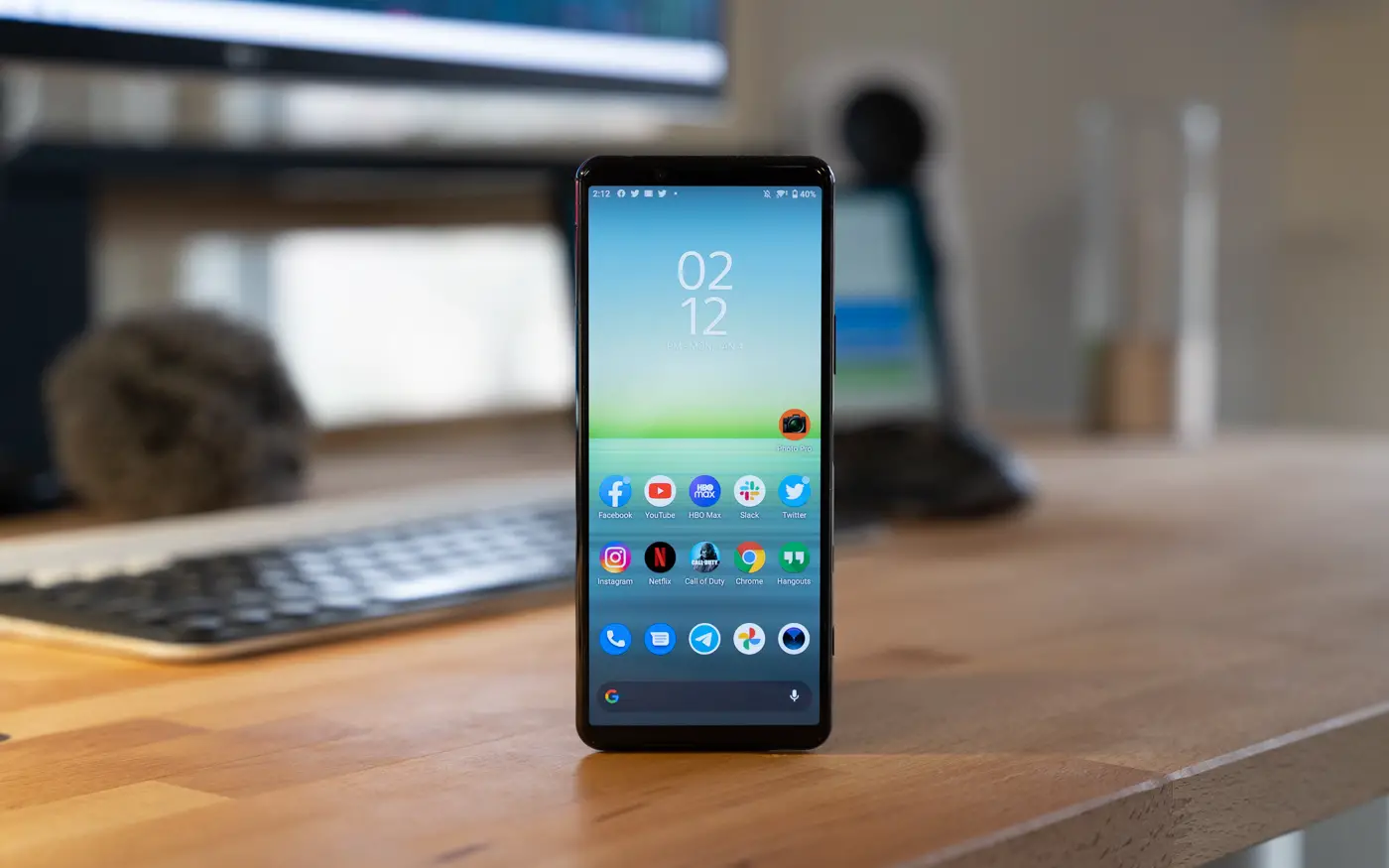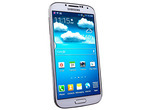Samsung Galaxy Note 20 Ultra review - Too big to fail - Android

The right tool for the wrong time.
At one point, I was going to start this review with a sentence like, "Samsung's never really screwed up the Galaxy Note; every version has been better than the last." I got about halfway through writing that sentence, and then it all came flooding back — the summer of 2016, when reports of Note 7s catching fire started trickling in. Then came the recall, then the reissue, then the second recall, then the bans. How could I have forgotten, even briefly, something that fundamentally changed Samsung, and the wider smartphone industry, so dramatically?
I forgot it for a moment because Samsung's done such a profoundly good job helping us forget it. In the wake of the Note 7 debacle, the company returned the following April with the Galaxy S8, which turned out to be its best-selling flagship ever, followed by the Note 8 a few months later. A year later, the Note 9 was the first premium Android phone to justify its thousand-dollar price tag, and the following year Samsung gave us two Note 10 models to gawk over as it worked hard to convince us they stood apart from their Galaxy S counterparts.
So now we have the Galaxy Note 20 Ultra, which borrows more than a bit of its pedigree from the huge and ultimately flawed Galaxy S20 Ultra. That phone, as you may have read, had some major issues with its cameras, from autofocus woes to exaggerated claims of telephoto prowess. Thankfully, the Note 20 Ultra makes up for those shortcomings and then some.
But is it right for you? Let's dig into it.
Galaxy S20 Ultra review
- Price & release date
- Hardware & design
- Performance & battery
- S Pen
- Software
- Cameras
- Competition
- Should you buy it?
- Changelog, April 2021
- Tips & tricks
- What about the Note 20?
At a glance
Samsung Galaxy Note 20 Ultra

Bottom line: If you're a loyal Galaxy Note buyer, the Note 20 Ultra is the best possible version ever made. Featuring a much-improved S Pen experience, a huge camera upgrade over previous Note versions, and every possible spec you could ask for, this expensive monolith is worth the price of admission. You just have to know you need it.
The Good
- One of the best phone displays out there
- Impeccable performance
- Great camera performance
- S Pen upgrades
- All-day battery life
The Bad
- Inexcusably slow and inconsistent fingerprint sensor
- Curved display causes false touches
- Very expensive
$1,100 at Amazon $1,300 at Best Buy $1,299 at Walmart $1,300 at Samsung
Samsung Galaxy Note 20 Ultra Price & release date

The Samsung Galaxy Note 20 Ultra was initially announced on August 5, 2020, then subsequently released on August 21, starting at $1,300 in the U.S., with an optional $1,400 model available offering 256GB of storage. Lucky for you, in the time since its release, the price has dropped by a bit, down to $1,100 as of April 27, 2021, at select retailers, including Amazon.
It's also available much cheaper if you trade in your current smartphone — Samsung gives up to $650 in trade-in credits if you have a recent Samsung or Apple flagship — or if you buy it through a carrier. In the U.S., like nearly all Samsung products, the Note 20 Ultra is available at AT&T, T-Mobile, and Verizon, along with smaller regional carriers and MVNOs. And because it's a 5G phone, you'll need a 5G plan to take advantage of the phone's extra cellular speeds.
You can get the Note 20 Ultra in three colors: Mystic Bronze, Mystic White, and Mystic Black. We're reviewing the new Mystic Bronze version and think it's the best color for the new phone.
Samsung Galaxy Note 20 Ultra Hardware & design
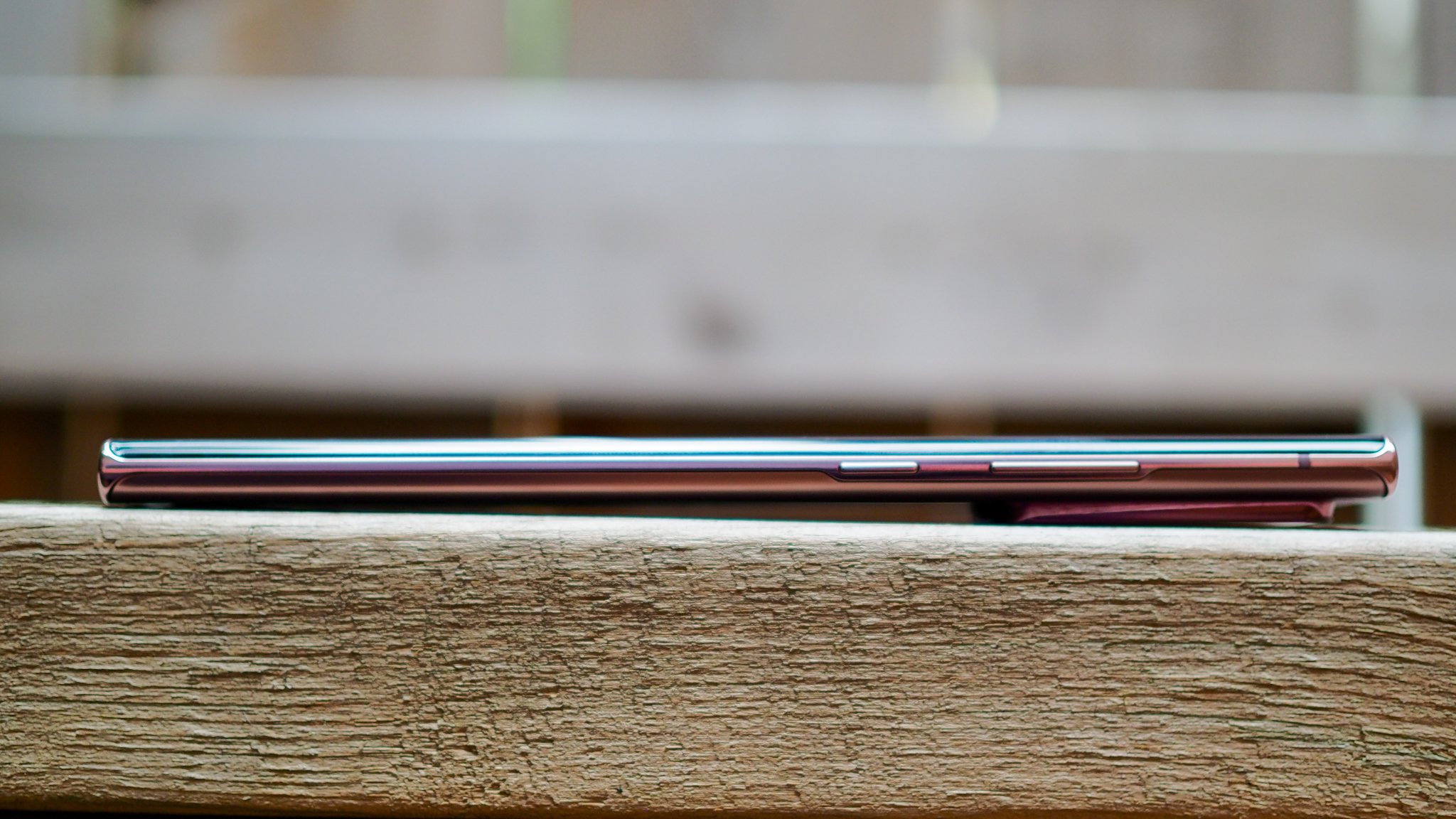
If it looks like a Note and smells like a Note, it must be a Note. That's basically what you get with the Note 20 Ultra since it hews closely to Samsung's boxy-body-curved-display design language employed since the Note 8 three years prior. This time, though, the Note 20 distills the design language to a science, executing tolerances that few manufacturers can achieve at scale.
From the front, it's really hard to tell the Note 20 Ultra apart from 2019's Note 10+.
From the front, it's pretty hard to distinguish the Note 20 Ultra from the Note 10+, down to the only-slightly-larger 6.9-inch screen size. Turn it around, though, and the Ultra's enormous camera module is the first thing you see — especially because it prevents the phone from lying flat on a table.
As with all Samsung AMOLED displays, the one on the Note 20 Ultra is stunning — nearly perfect in many regards — with seamless color roll-off, inky blacks, incredible daytime brightness that's some 20% higher than its predecessor (though during regular usage, it's difficult to tell the difference), HDR10+ support, and more. The upside is that, once again, Samsung's made the best mobile screen out there, right in line with that of the S20 series and even competitive with the newer Galaxy S21 Ultra.
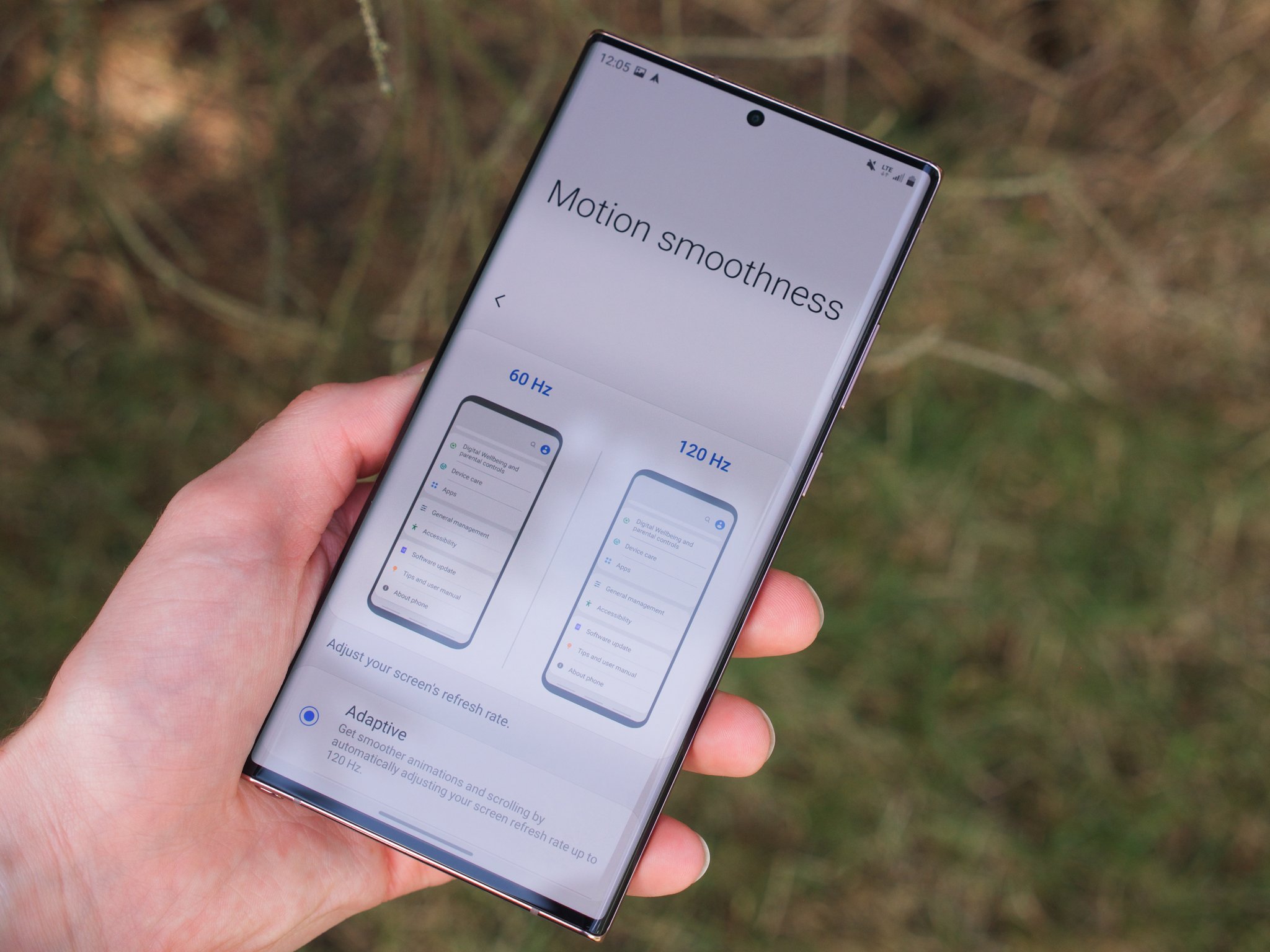
Samsung made some slight alterations to the way 120Hz works versus the S20 series, too; instead of asking you to manually choose between keeping the refresh rate at either 120Hz or 60Hz, when set to the higher rate, the system decides when to dynamically step down to 60Hz again. By taking the onus away from the user in deciding whether they want to prioritize smoothness over battery life, Samsung landed on the best of both worlds, and I only noticed a few instances where the step-down was awkward and noticeable.
You still can't do 120Hz at the Note 20 Ultra's full resolution; you'll need the newer S21 Ultra for that.
OnePlus did the same thing with its OnePlus 8 series, but outdid Samsung in one important area: it allowed 120Hz at the phone's highest 1440p screen resolution. With the Note 20 Ultra, Samsung still limits Dynamic Motion Smoothing, as it calls the feature, to 1080p. I actually think this is a good move since 120Hz at FHD resolution is a far better experience than 60Hz at QHD, but the option to override (and kill the battery much more quickly in the process) remains exclusive to the newer S21 Ultra.

There are two areas where I wish Samsung would have taken critics' criticisms of the previous Note series to heart. The first is that Samsung did not improve the ultrasonic fingerprint sensor inside the Note 20 series. It's the same slow, unpredictable module from Qualcomm that debuted in early 2019 with the S10. The touch area is too small, and there's minimal visual or haptic feedback to indicate you've identified the correct location. The best the Note 20 Ultra can do is offer a small fingerprint overlay when the always-on-display is enabled, which it isn't by default.
I've complained about this fingerprint sensor through four Samsung phone generations now, and the response usually falls into two camps: people who think I'm completely overreacting and have no issues with usage at all, and those who, like me, despise the sensor and would prefer literally any other biometric option than this one. My frustration is exacerbated by the fact that, back in December 2019, I saw Qualcomm's second-generation ultrasonic fingerprint sensor in action, and its promise was incredible: bigger, faster, and less error-prone. I'm just glad the S21 Ultra finally brings a newer sensor.
This hardware is massive and beautiful, but Samsung still uses its annoying and slow ultrasonic fingerprint sensor, which is tragic.
My other area of complaint centers around the Note's curved glass. With any curved surface, palm and errant touch rejection need to be perfect. But it's not. On dozens of occasions during my time with the Note 20 Ultra, I had to either repeat touches that weren't registered or correct errant taps in the wrong places. I know it's a hard problem to solve, but it's one of Samsung's own making; the company didn't put curved glass on the mainline Note 20 because it's cheaper. Samsung even lessened the severity of the curve radius on the S20 series prior to the Note 20 series debut. But the Note 20 Ultra reinforces the fashion-over-function the series has been struggling with since the Note 5 back in 2015. Subsequent software updates have lessened the problem, but this shouldn't have been a problem to begin with.
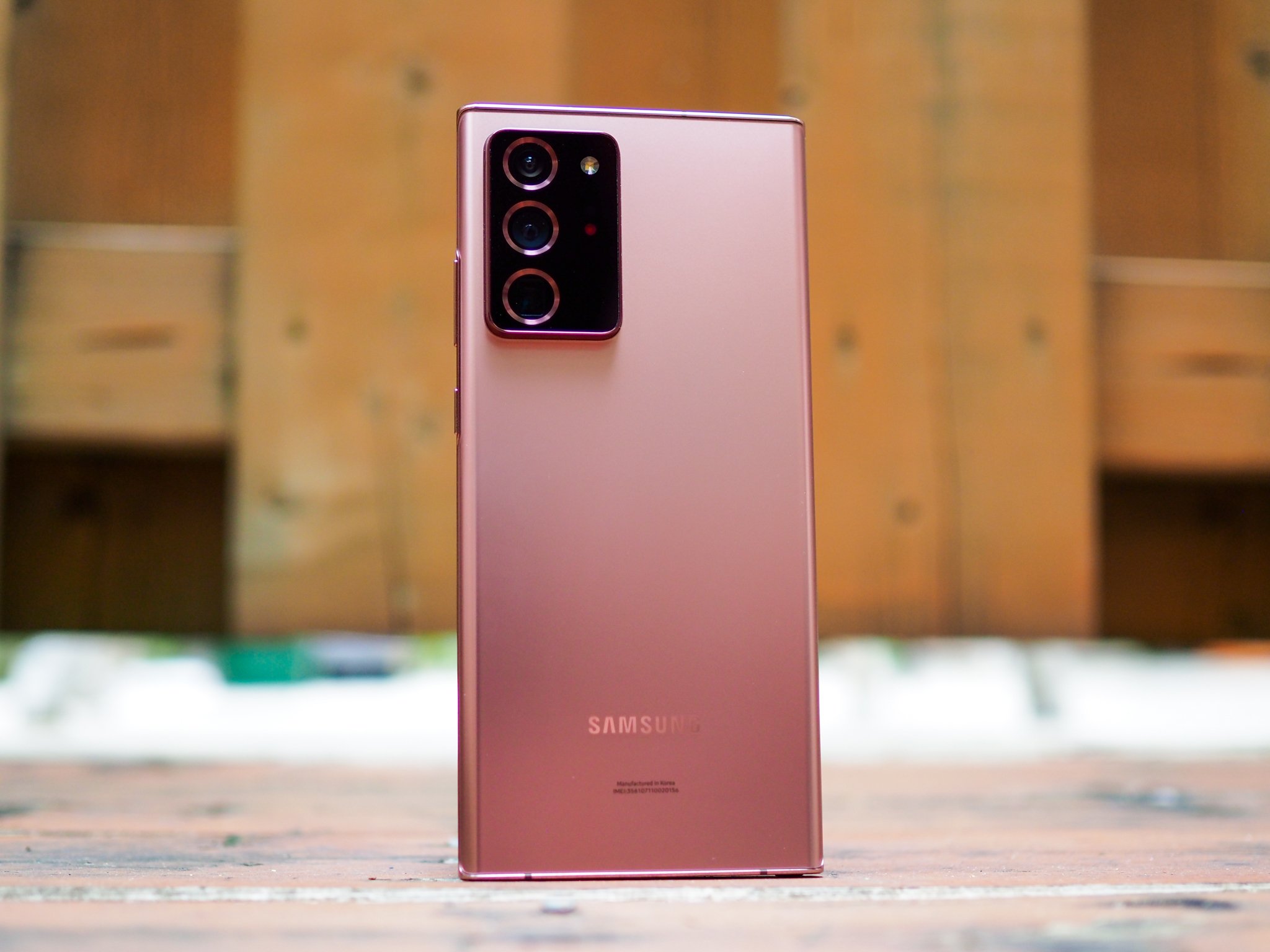
Of course, the Note has always strived to appeal to both fashion and function, and the Note 20 Ultra, at least in this Mystic Bronze colorway, is stunning. Like, nicest-hardware-ever gorgeous. There were more than a few moments during my time with the phone when I just sat with it and admired the amount of work and the years of exhaustive iteration that led to this finished product. Yes, I think it's a bit too big for my personal tastes, but this phone is beautiful as a physical object.
Samsung's decision to go matte with its finish this year should be applauded, too. Glass phones are fragile, yes, but they're also disastrous fingerprint magnets. This phone is both hardier than previous Galaxy phones, outfitted with Corning's new Gorilla Glass Victus on the front and back, but it's the particular light-absorbing coating on top of it that I appreciate most. Contrasted with the reflective color-matched aluminum frame, I'm all-in on this particular design decision, and I hope Samsung keeps it around for generations to come.
Samsung Galaxy Note 20 Ultra Performance, specs and battery life
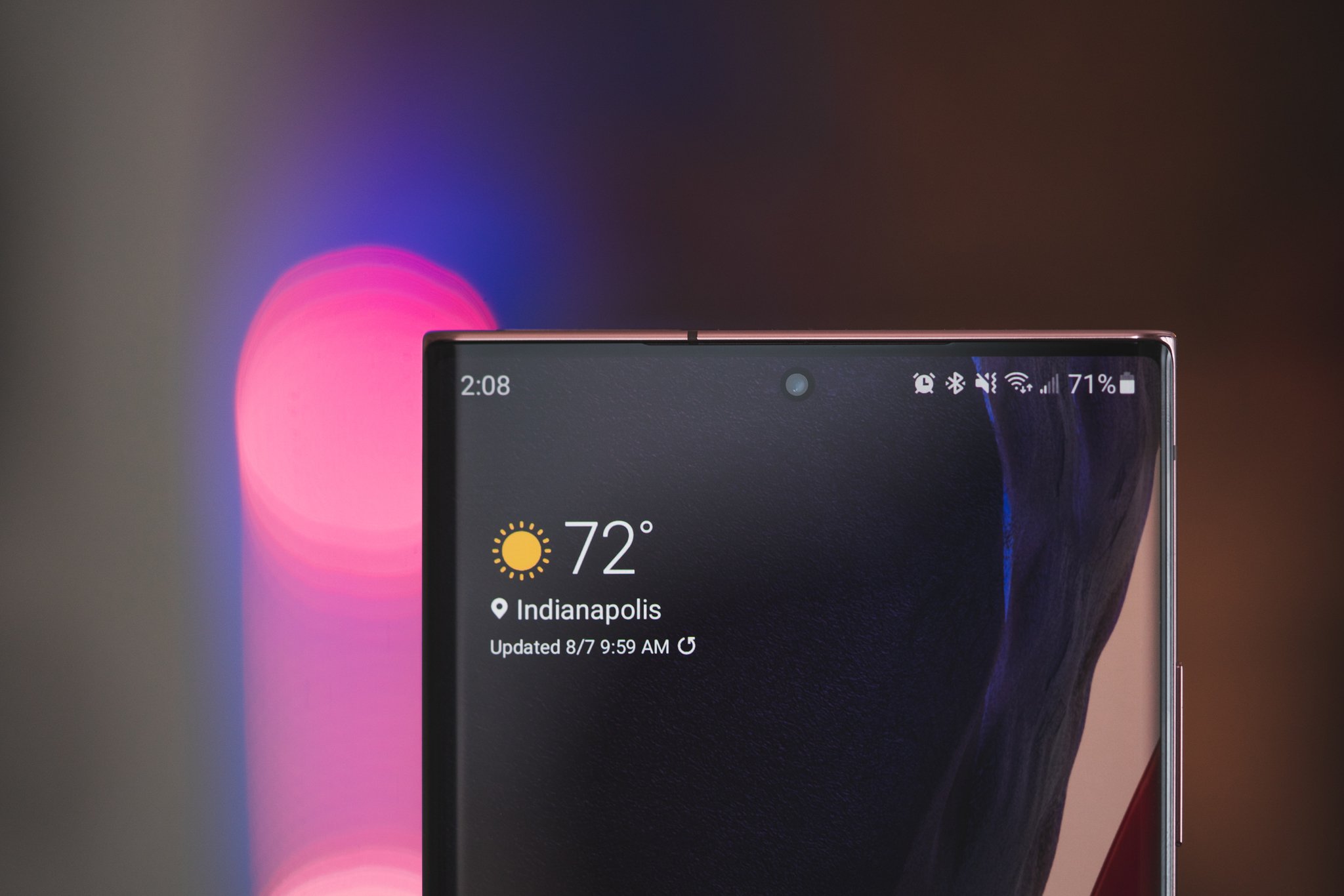
| Category | Galaxy Note 20 Ultra |
|---|---|
| Operating System | Android 11 One UI 3.1 |
| Display | 6.9-inch AMOLED 3088 x 1440 120Hz refresh rate |
| Processor | Qualcomm Snapdragon 865+ |
| Memory | 12GB LPDDR5 |
| Storage | 128GB / 512GB |
| Rear Camera 1 | 108MP primary f/1.8 OIS |
| Rear Camera 2 | 12MP telephoto f/3.0 5x optical zoom |
| Rear Camera 3 | 12MP ultra-wide f/2.2 |
| Front Camera | 10MP f/2.2 |
| Battery | 4,500 mAh |
| Water Resistance | IP68 |
| Dimensions | 77.2 x 164.8 x 8.1mm |
| Weight | 208g |
| Colors | Bronze Black White |
It should come as no surprise that the Galaxy Note 20 Ultra runs perfectly. The Snapdragon 865+ inside it isn't much changed from the 865 in the Galaxy S20 series, but the 10% bump in the Prime core clock speed, along with a GPU 10% faster, should be enough to satisfy you if top performance is a priority.
I really tried to tax the Galaxy Note 20 Ultra, from trying my hand at S Pen-assisted video editing to playing round after round of COD: Mobile, and the phone obviously passed muster. Of course it did; it cost $1,300 at launch. If you can find anything on the Android platform that is legitimately onerous to the Snapdragon 865+, I'll buy you a beer. (Seriously, tell me what you do to tax your phones aside from synthetic benchmarks.)
The Note 20 Ultra also comes with 12GB of LPDDR5 RAM standard, which should be more than enough for even the most spasmodic of multitaskers; 128GB of UFS 3.0 storage is the baseline, with an optional bump to 512GB for $100 more. And a microSD slot lengthens the still-plastic SIM tray (Samsung, up your game here); frustratingly, neither the regular Note 20 nor the newer Galaxy S21 series offers expandable storage. The Note 20 Ultra may be the last Samsung flagship to do so.
There should be nothing surprising about the rest of the Note 20 Ultra's spec sheet: it has impressively full and loud stereo speakers, which I often used to play nursery rhymes for my two-year-old daughter; an IP68 rating, which protected the phone from the time my daughter grabbed it and dropped it into a bathtub full of water (it survived); and a 4,500mAh battery, which did a pretty good job lasting through most days.
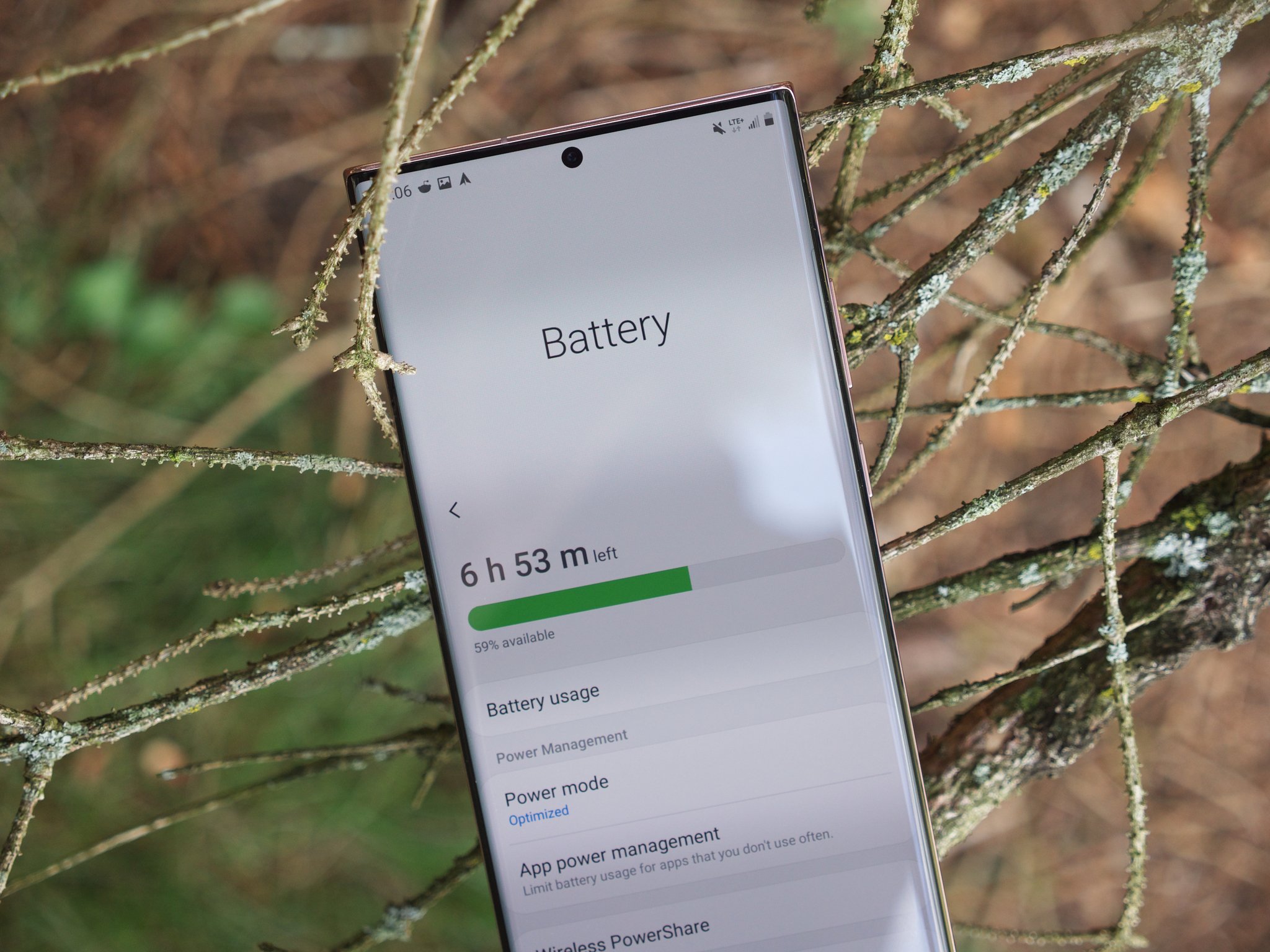
I can confidently say the Note 20 Ultra will be an all-day phone for the vast majority of people who buy it, even with 120Hz enabled. I found my unit was usually nearly dead by around 9 pm or 10 pm most nights, after having removed it from the wireless charger next to my bed at 7 am that morning. With an average of six hours of screen-on-time, I'm happy with the Note's uptime, but if battery life is more important than anything else, I'd stick with something in the Galaxy S20 or S21 lines.
My colleague, Hayato Huseman, who produced our companion review video, told me he got over seven hours of screen-on-time per day, so your mileage may vary.
The 5G dilemma
It would be easy to ignore the elephant in the room, the single-biggest thing weighing on Samsung's recent smartphone pricing: 5G and the Snapdragon 865.
While 5G is certainly promising, right now, it's hard to justify the added hardware cost that's built into it. Qualcomm charges the phone makers a lot of money for its top-of-the-line chip, and while some, like OnePlus, have chosen to cut various corners to keep their flagships under $1000, Samsung leans into the reality.
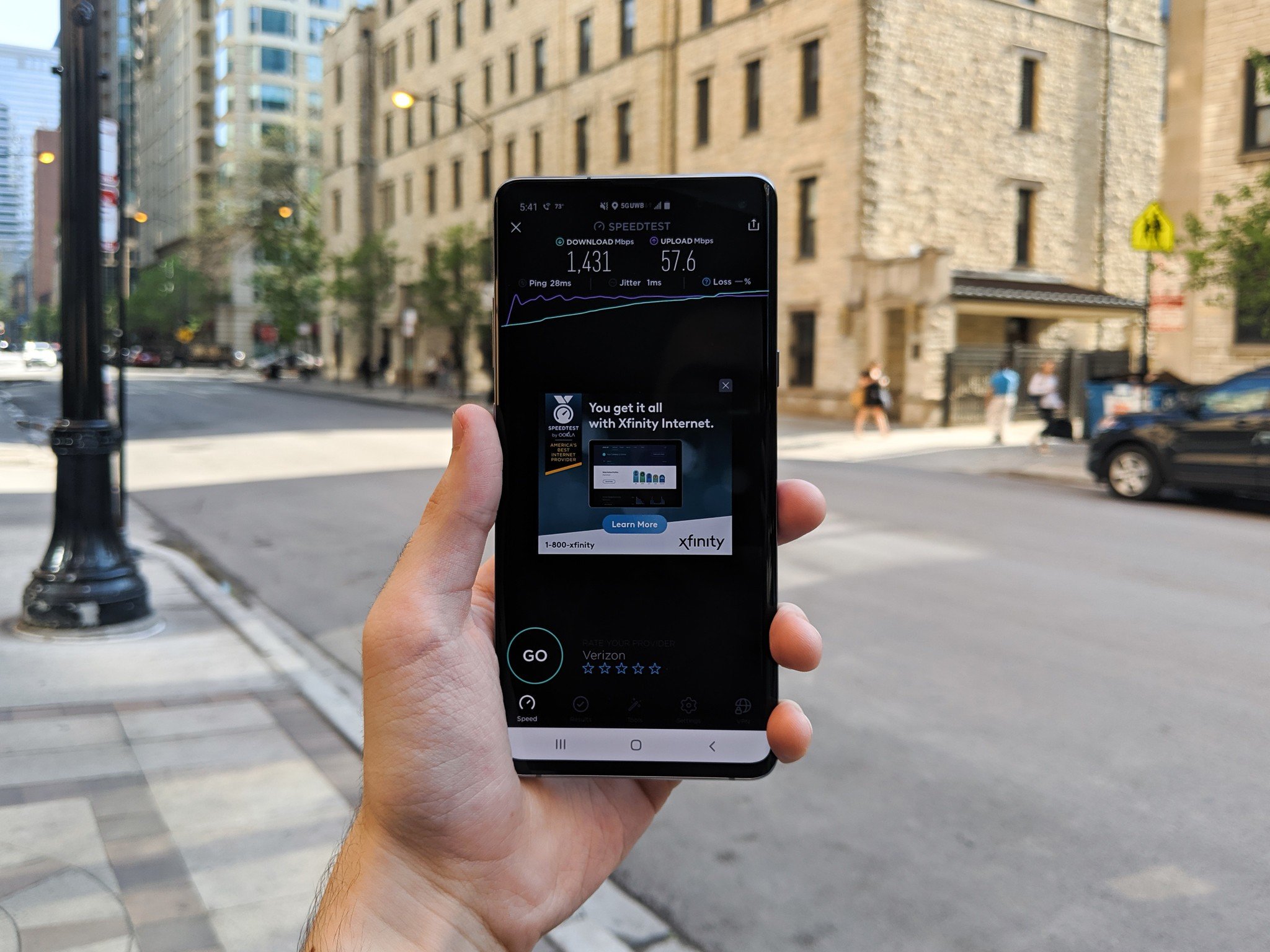 Testing Verizon's 5G network.
Testing Verizon's 5G network.
At the moment, the U.S. is in a transitional phase, with T-Mobile in the best position to show its strength. And in markets where it inherited Sprint's 2500Mhz-based 5G network, it's a great value proposition, but the vast majority of the cities where the company operates have slower-than-LTE 600Mhz 5G.
AT&T suffers from the same problem: where its 5G network is available, it's only sending slower, more weather-hardy signals over the 850Mhz spectrum, which makes it similar to LTE in most regards.
Verizon's 5G, while considerably faster, is harder still to come by, and the company even admitted that it's not worth spending extra money on right now when it chopped the additional fee it used to charge to access its mmWave 5G network.
The problem is that, at the moment, if you want to spend good money on a phone in the U.S., you're essentially paying a 5G tax. That tax is less pronounced on devices running Qualcomm's less powerful chips like the Snapdragon 765, including the Motorola Edge, but it's still there. If you don't care about being on the latest wireless network right now, and I don't blame you if that's the case, you have to make the choice to wait for the networks to improve or the phones to get cheaper. Either way, it's hard to recommend spending four figures on a phone when you know so much of that investment is going to waste right now.
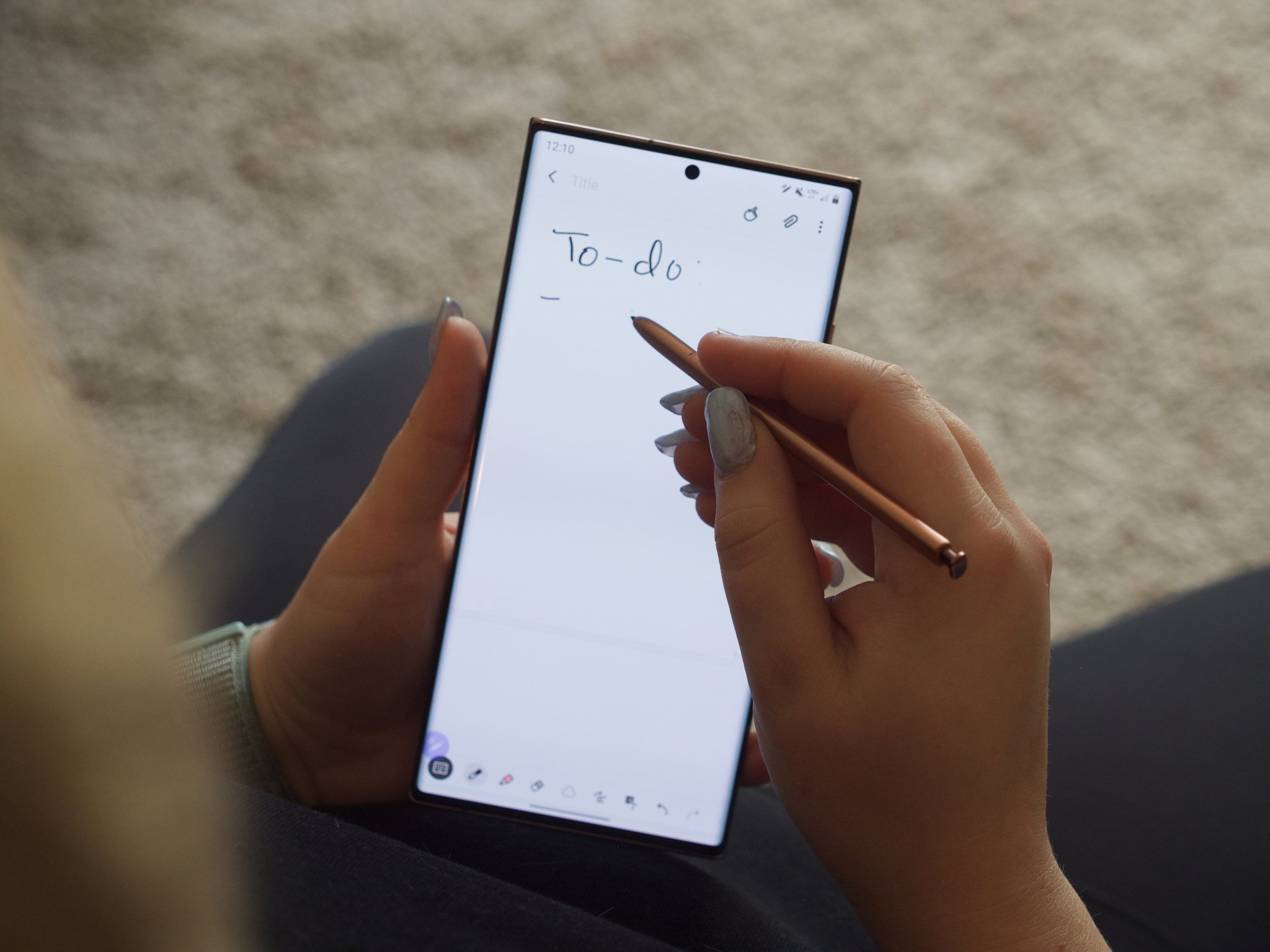
The S Pen — Joe's take
Year after year, the distinction between the Galaxy S and Note series becomes increasingly difficult to identify. The Note used to stand out as Samsung's power-user smartphone, but we now live in a world where the Galaxy S handset that comes out before the Note is every bit as fast and capable. Even more recently, the Note's future has been further obscured as rumors flood that Samsung will stop making them, instead bringing S Pen support to other devices like the S21 Ultra and future Z Fold models. Still, the S Pen has been one of the Note's greatest strengths since the very beginning, and with the Note 20 Ultra, it picks up a few key features and improvements in an attempt to make it stand out as a legitimate benefit over the already great S20 lineup.
Perhaps the most notable upgrade the S Pen sees this year is its reduced latency. The Note 20 Ultra boasts an impressive latency response of just 9ms, which is considerably less than the 42ms latency previously offered on the Note 10. That's a flashy number to tout on paper, but the real-world benefits are more difficult to discern.
I don't have an artistic bone in my body, which means my use of the S Pen is reserved for navigating the user interface and taking handwritten notes. The Note 10's S Pen never felt slow or unresponsive to me, and using it side-by-side with the Note 20 Ultra, I personally can't notice much of a difference. The only time where I could visibly see the Ultra's reduced latency came into play when drawing long lines very quickly on the screen. Where the Note 10's S Pen gets ever-so-slightly ahead of the line that was being drawn, the S Pen on the Note 20 sticks with its virtual ink as if you were writing on real paper. It's great to see that Samsung is constantly working to improve the S Pen experience, even if this is likely something that only skilled artists will see any true benefit from.
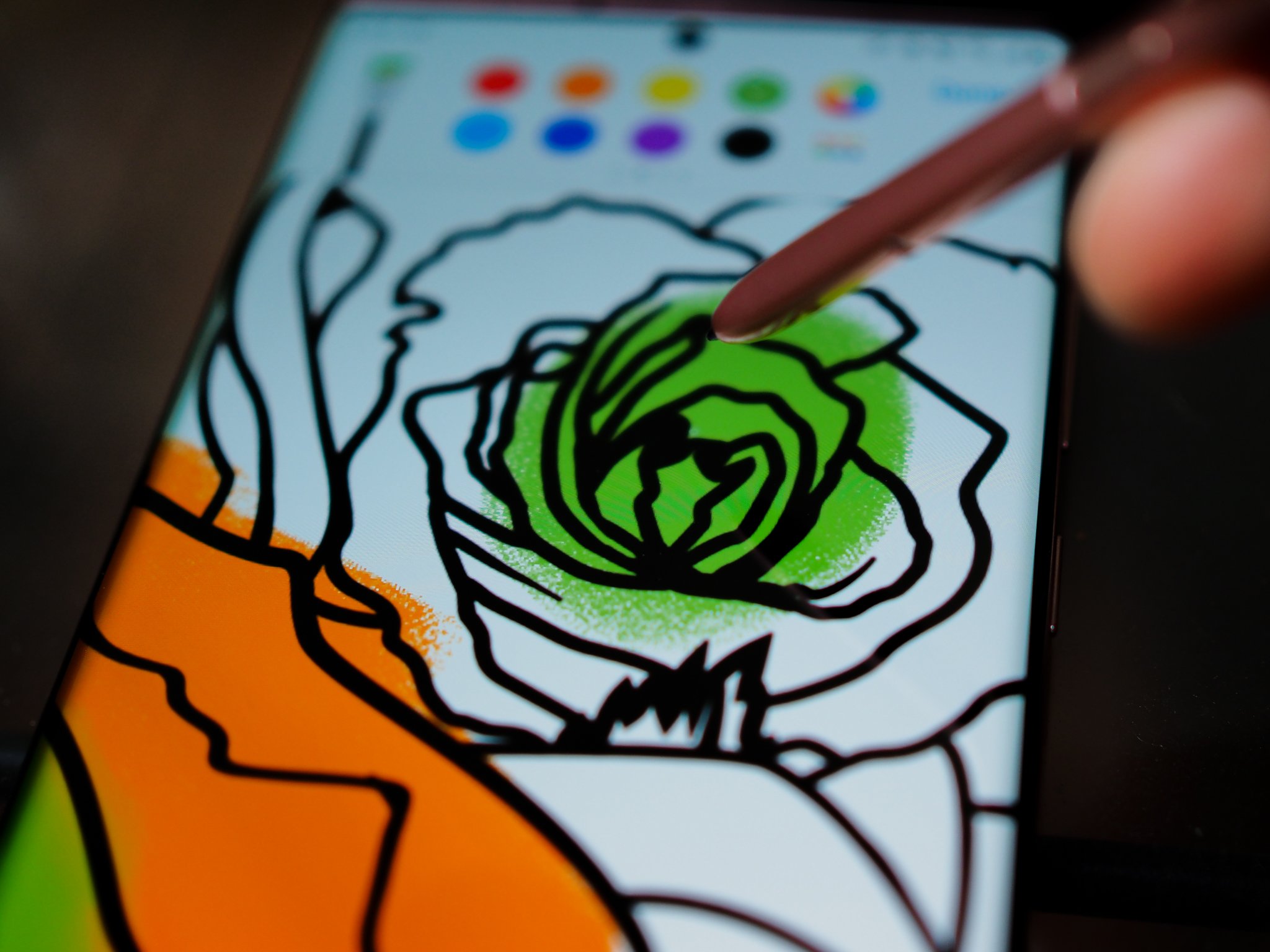
The other big upgrade for the S Pen is a new batch of Air Actions. Air Actions were introduced on the Note 9 as a way to remotely interact with the camera app, and with the Note 20, they're expanded as a new way to navigate the phone and quickly open apps. There are five actions/gestures you can perform with the S Pen, and each one can be customized as a navigation button, S Pen feature, or app shortcut.
The S Pen's Air Actions are pretty unreliable, which means most people will abandon them before they're memorized.
The idea is to expand the functionality of the S Pen and make it more of a remote for the Note rather than just a stylus. In my testing, however, I found these Air Actions to be incredibly unreliable. Air Actions require an insane amount of precision to be performed accurately, and because of this, the majority of my time spent using them saw me making the wrong action or messing up the gesture altogether. The idea of having five app shortcuts that you can call on at any time is excellent, but after my 10th failed attempt at using Air Actions, I mostly gave up on the feature.

Samsung's also packed a bunch of smaller tweaks into the Samsung Notes app, and while there's nothing here that's revolutionary, they all help Samsung Notes feel even more fleshed out than it already was. Notes can now be organized in desktop-like folders for vastly better organization. There's a new PDF import tool for quickly annotating files and an Auto Straighten feature that automatically straightens out your handwriting with the tap of a button.
One of the flashier additions is Audio Bookmark, which works when you're jotting down notes while recording audio from a business call, lecture, etc. Once the recording is complete, you can tap on any notes you took during it and jump to that section of the recording. It's a very specific feature that a lot of folks may completely ignore, but it's honestly quite handy and could prove to be a lifesaver during especially long Zoom calls.
Here's the thing. Even though the reduced latency isn't super noticeable and the new Air Actions are disappointing, the S Pen was already the best stylus available for a smartphone. Even if Samsung only made it marginally better, it already had an incredible foundation to begin with. There's nothing here that
29/04/2021 10:30 AM
Black Shark 4 series pre-order open, watch teardown here
29/04/2021 09:30 AM
Taster grabs $37 million for its native online restaurants
29/04/2021 07:10 AM
Samsung Suffered $270 Million Loss Due To Power Outage In Texas
29/04/2021 05:30 PM
New Opportunities For Online Gaming Apps With Android 12
29/04/2021 12:44 PM
Chromecast with Google TV update introduces advanced video controls
29/04/2021 04:22 PM
After years, Sony’s Xperia division is finally profitable
29/04/2021 05:50 AM
Sony begins selling the PS5 in China
29/04/2021 12:45 PM
Samsung Galaxy S20 series update brings camera improvements, more
29/04/2021 08:36 AM
- Comics
- HEALTH
- Libraries & Demo
- Sports Games
- Racing
- Cards & Casino
- Media & Video
- Photography
- Transportation
- Arcade & Action
- Brain & Puzzle
- Social
- Communication
- Casual
- Personalization
- Tools
- Medical
- Weather
- Shopping
- Health & Fitness
- Productivity
- Books & Reference
- Finance
- Entertainment
- Business
- Sports
- Music & Audio
- News & Magazines
- Education
- Lifestyle
- Travel & Local
2014 © US apps and news





